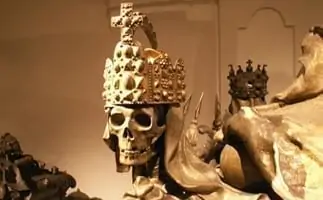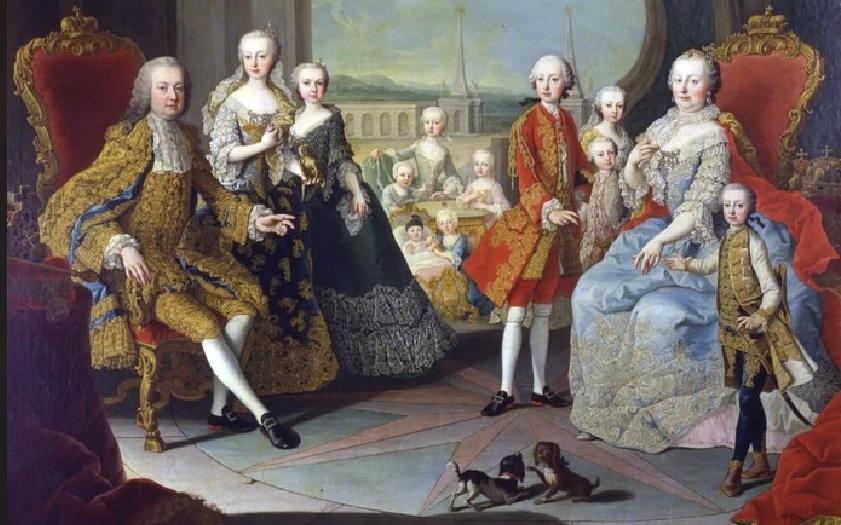Who was buried in the Capuchin crypt? How long has this burial ground existed? Which is the most impressive coffin? Were all emperors buried here? The Capuchin crypt is located under the Capuchin church in the middle of the city on Neuer Markt. It has been looked after by the Capuchin friars for 400 years. 149 Habsburgs, including 12 emperors and 19 empresses/queens , are buried here. The Baroque double sarcophagus of Maria Theresa and her husband Emperor Franz I Stephan of Lorraine is particularly impressive . The huge coffin was built by Balthasar Moll during their lifetime. Emperor Franz Joseph, his beloved Sisi and son Rudolf were laid to rest here in beautiful Art Nouveau coffins . Sisi wanted her ashes to be scattered over the sea off the island of Corfu. The last wish was not granted to her. She rests in her rightful place next to her husband and son in the Art Nouveau tomb. The Capuchin crypt is divided into several crypts . Each coffin reflects the respective period, from Renaissance, Baroque, Classicism to Art Nouveau . The life story of the ruler is vividly told on the basis of the decorations of the coffin. Especially touching are the small children’s coffins, for children who died much too early, which was often the case in the Baroque period. Since the beginning of the 17th century , the Habsburgs have been buried in this tomb. Empress Anna, the wife of Emperor Matthias , was the founder. In the meantime, the tomb has already been expanded several times. The last extension took place in 1960 and was carried out by Karl Schwanzer using the then current exposed concrete. A single Protestant was buried in the Catholic crypt . It was Archduchess Henriette, wife of Archduke Charles, Napoleon’s conqueror at the Battle of Aspern. Napoleon’s only son also lay in the Capuchin crypt with his mother Marie-Louise until 1940. It was built in the spirit of the Habsburg marriage policy at the beginning of the 19th century. married to Napoleon. The Duke of Reichsstadt, as his title was, who had already died of tuberculosis at the age of 21, was transferred to the Invalides Cathedral in Paris on Hitler’s orders. Not all Habsburgs rest here, there are exceptions. Heir to the throne Franz Ferdinand (nephew of Emperor Franz Joseph) was buried in Artstetten Abbey together with his wife Sophie Chotek , who was not of the proper rank. The burial took place at the same time, as both died in the tragic assassination in Sarajevo on June 28, 1914 . A non-Habsburg woman may also rest in the imperial crypt, very close to the double sarcophagus of Maria Theresa. This is the Imperial Countess Maria Karolina von Fuchs-Mollard, who, as the educator of the regent and her children, was an important reference person for the entire imperial family. A special “admission ritual” was performed at recent state funerals. The master of ceremonies has to knock three times and admission is only granted after the simple name is mentioned with the addition “a poor soul”. Time Travel Tip: If you are very interested in the Habsburgs, a visit to the Capuchin Crypt is highly recommended: the coffins take you through the lives and successes of the individual rulers. So you get a very good impression of the Habsburg dynasty. More info: Capuchin Crypt – The burial place of the Habsburgs in Vienna
Image source:
https://de.m.wikipedia.org/wiki/Datei:Kapuzinergruft_Wien1.JPG



